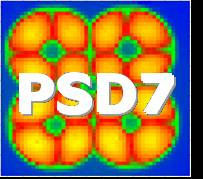Speaker
Dr
Attilio Andreazza
(ATLAS Pixel Collaboration)
Description
The ATLAS Pixel Detector is the innermost tracking system of the
ATLAS experiment at the Large Hadron Collider.
The performances of the production modules of the ATLAS Pixel
Detector have been studied using data collected with a 180 GeV/c
pion beam at the CERN SPS accelerator.
Several of the modules have been irradiated after assembly and
before the test beam using 24 GeV/c proton up to the full LHC
fluence of 1015 1 MeV neq cm-2 and a total ionizing dose of 500 kGy.
In this contribution, a selection of the results from the analysis
of test-beam data is presented. The post-irradiation depletion
voltage and charge collection efficiency have been studied in
detail. The spatial resolution, before and after irradiation, will
be presented.
Particular emphasis will be given to the measurements of detection
efficiency. The efficiency was studied as a function of the phase
between the edge of the clock operating the detectors and the
particle arrival time provided by the beam trigger detectors. This
allowed the study of the optimal clock timing for the operation of
the detectors at the LHC. The results for not irradiated and
irradiated modules are discussed.
The timing uniformity between the different types of pixel cells and
between the 16 front-end readout chips of a detector module is also
presented. The interplay between the optimization of detection
efficiency and spatial resolution was also studied.
Data were also taken with a high intensity beam in order to reach
and exceed the pixel occupancy of the innermost ATLAS tracking layer
during operation at the nominal LHC luminosity and test the limits
of the data acquisition architecture. The detection efficiency as a
function of the beam intensity is discussed for different
configuration settings of the read-out electronics.
Primary author
Dr
Attilio Andreazza
(ATLAS Pixel Collaboration)
